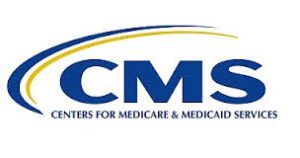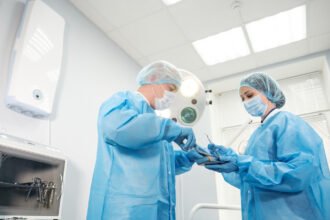Previously, Dr Lawrence Cheskin from Johns Hopkins talked to us about his mHealth program TRIMM. Today, Dr Ricardo Bello, assistant professor in the Department of Cardiovascular and Thoracic surgery at Montefiore Medical Center in New York City tells us about the GRRAM (Goal to Reduce Readmissions at Montefiore) Project. Dr Bello leads the Department’s quality assurance and performance improvement committee and through this committee, GRRAM was initiated to keep patients recovering from heart surgery from having to be re-admitted to the hospital.
Previously, Dr Lawrence Cheskin from Johns Hopkins talked to us about his mHealth program TRIMM. Today, Dr Ricardo Bello, assistant professor in the Department of Cardiovascular and Thoracic surgery at Montefiore Medical Center in New York City tells us about the GRRAM (Goal to Reduce Readmissions at Montefiore) Project. Dr Bello leads the Department’s quality assurance and performance improvement committee and through this committee, GRRAM was initiated to keep patients recovering from heart surgery from having to be re-admitted to the hospital.
A recent study showed parts of New York have among the nation’s highest readmission rates. As part of the project, a new clinic was created to check on patients’ recovery a week after they go home – at no extra charge. Also, patients wear a bracelet with a 24-hour phone number to call the cardiac unit at the first sign of problems.
In this interview, Dr Bello talks about the preliminary results of the GRRAM program, which are very positive indeed. He explains that the patients love the simplicity of the wrist band and have used it with great success. Nurses say that the patients feel that the 7 day post-op clinic gives them a chance to ask questions and go over post-op plans and activities in a more calm setting than during discharge from the hospital.
Now watch the video and listen to Dr Ricardo Bello talk about Montefiore Medical Center’s GRRAM program to reduce hospital readmissions.
To see other videos in this series, please go to this page. And if you have a story to tell that can reduce healthcare costs and raise quality of care, please comment below or email me at joan@socialmediatoday.com Thanks!
Video transcription (by TranscriptionStar)
Joan: Hello. I’m Joan Justice with HealthWorks Collective, and I’m here today with Dr. Ricardo Bello Assistant Professor in the Department of Cardio Vascular and Thoracic surgery at Montefiore Medical Center in New York city. Dr. Bello leads the Departments Quality Assurance and Performance Improvement Committee, and through this committee a project called GRRAM the goal to reduce readmissions at Montefiore that aims to keep patients recovering from heart surgery from having to be readmitted to the hospital was initiated.
A recent study showed parts of New York have among the nation’s highest readmission rates, so as part of this project a new clinic was created to check on patients recovery a week after they go home at no extra charge. Also patients wear a bracelet with the 24 hour phone number to call the cardiac unit at the first sign of problems. Dr. Bello, tell us a bit about GRRAM, how it got started and how it works?
Dr. Ricardo: First of all, good morning Joan and thank you for having on the program.
Joan: Thanks.
Dr. Ricardo: So the way the program got started this is one of our projects in the Performance Improvement Committee, and it was a rather important project that’s been getting national attention ever since the Center for Medicare and Medicaid services brought it to the forefront back in October of 2012. At that point they basically look at hospitals, they look at the readmission rates, and they setup a reimbursement panel team scheduled you might say for each of the different hospitals based on how well they did with keeping patients out of the hospital.
The penalties range any where from 1 to 3%. Those programs they were penalized 30%. It was basically implemented over a three year program, over a three year period allowing them to improve during that time. The way that we got involved is that in our department we were being scrutinized as other departments in our hospitals were such cardiology and medicine for diagnostics such as heart failure myocardial infarction and pneumonia, but cardiac surgery is a very visible program in any hospital and across the country and this is something we’re seeing coming down the pipe, and so we decided to address it early.
Joan: Good for you.
Dr. Ricardo: The way that we went about it was that we first did a little bit of background research. One of our physician assistant is actually manually created a database and tracked each one of our patients and was discharged, and then returned to the hospital, and he recorded all sorts of data on these readmissions. And most importantly he collected the amount of time it took him to come back, and he recorded the reason why they came back to the hospital and that was a very enlightening. That was a very enlightening experience because it told us where we had to focus our efforts.
Joan: Sure.
Dr. Ricardo: We found that the patient is on average returned within 15 days at least half of the patients returned within 15 days, 10 to 15 days, and the other half after that. So that already kind of told us when we — when was it that these patients started coming back and then we found out the reasons. There were several medical reasons which are okay for patient to be readmitted because those are medical problems that need to be treated. Heart failure, pneumonia, atrial fibrillation three very common problem after heart surgery but there were a number of others that we thought were avoidable, then let to avoidable readmissions.
For example a patient runs out of pain medications and they don’t have a primary care physician to go to, so they go to their local emergency room, and they got readmitted because it’s in the emergency room sometimes it’s difficult to discern between pain from the incision and a recurrent heart attack..
Joan: Right.
Dr. Ricardo: So they often get readmitted. And there were other problems. Patients would often tell us that they had a question, but they didn’t know that the office was opened or that they could reach somebody 24/7, so taking all this information we went about developing a plan and refining our data collection efforts. The first thing we did was we created a formal database from the hospitals in patient records of all of the readmissions. That was step one. We needed to be able to track the readmissions where lively if we knew that we were going to be able impacts on that readmission rate.
The next thing we did was that we look at our current practices and we looked at some of the reason. Well patients often came back with flu or overload, and they often came back with pain because they had run out of pain medications. We examined how much of those medications they were getting. We changed the amount that they were getting, and instead of that coming back for a prescription refill which is really all I need, but in several get readmitted now that gave them enough medications to reach their first office visit. So that really kept them out of the emergency room which is what often leads to readmission.
Joan: Sure.
Dr. Ricardo: So that was some of the big things that we did. Now the next thing that we did was really supported by the leadership or the department in the hospital. This is the hospital wide and really a nationwide problem as we have.
Joan: Sure.
Dr. Ricardo: And that is that we created a — we created this clinic which you referred to we call it the EarlyPost Op[Phonetic] [0:05:49] Clinic. And basically every patient is discharged home, gets an appointment in seven 7 to 10 days to return to our office. They visit with a nurse practitioner who reviews all of their medications, answer their questions for them. They explain to them the expectations, pain, discomforts, other problems that they might have at the cardiac surgery, and that when the patient sort of has an awareness as to what maybe normal, what may not be normal. And what’s would be alarming and what they need to call for.
The other thing we developed are is these wrist bands here which you can see. We have an email at hospital and we also have our 24 hour hotline.
Joan: I see. That’s great. 24 hour hotline is perfect, yeah.
Dr. Ricardo: Yeah, this is to remind patients that in fact we are available 24/7, and this has really — this has really answered so many questions. Patient call these number all the time. They get their questions answered. Our whole team that might be answering this phone number everybody down from secretaries to nurse practitioners, physician assistance, and even the surgeons know to try to address these problem over the phone if they’re simple problems not to say as in the past just come to the emergency room.
Joan: What a simple thing, that’s great.
Dr. Ricardo: It’s a very simple thing. These bands are extremely inexpensive as you know this was you know many organizations use this bands you know and they are — you can get them anywhere on the web. They’re highly customized so you know we had a company that work with us in creating our bands. And like I said you know even if these were dollar a piece of readmission as thousands of dollars.
Joan: Of course no, it’s — I love it. It’s so simple.
Dr. Ricardo: That was a no brainer really. And so finally you know we implemented all these things. We started in November of 2012. We’ve been running this program. It’s been going very, very smoothly. Everybody and the Department really jumped onboard. And we have now collected data up until then. Just to give you an idea of the numbers when I reviewed comparing the patients from January 2012 to November 2012 before this program was implemented to now November 2012 to present this is what we’re seeing, our readmission our 30 day readmission rate which is the number that CMS looks at.
Joan: Right.
Dr. Ricardo: Ours was previously in the range of 14 to 15%, it’s now down to 10%.
Joan: That’s great.
Dr. Ricardo: And we suspect that it will continue to go down as we’re focusing and honing on, and we learn more from these patients and why are they — the patients come back. It’s never going to go down to zero because there are patients that in fact do develop —
Joan: Sure.
Dr. Ricardo: — with the real people and real mega problems with the real frequency, and so we don’t expect it to go down to zero. The other interesting thing is that we also track the patients that return to the emergency room, but don’t get admitted. We implemented some changes there any time a patient comes in, an attending surgeon will go down, speak with the emergency room physician, reassure them if this is a necessary admission or if the patients can safely be discharged home, and with all these changes what we’ve learned is that a readmission not a readmission sorry our emergency room visit rate, so patients that leave the hospital but return to the emergency room within 30 days has gone from about 21% to 13%.
Joan: That’s great, that’s really helpful.
Dr. Ricardo: Because they have the emergency room and these problems are still being dealt with. They are being dealt with in a safe manner, and are cost effective manner, and really that’s what we’re striving for. You know how do the patients feel about it? Well, that’s you know we learned something that too that was quite unexpected to us, and it was quite unexpected for us, and it was the following. When the patient is discharged home, they’re given a lot of instructions in a very short period of time.
Joan: Yeah I know.
Dr. Ricardo: At the time when they’re very anxious you know they’re about to be instructed, just had a major surgery what if something happens at home. And what the patient tells about this Early Post Op Clinic is this you know it’s a setting where everybody is relaxed. We had time to take in what is happened. I have a way to ask questions the way that I need to ask the questions to understand them medications are explained in detail.
Things that we are said before that you don’t remember were said before or said again, and really that’s why the patients like it. They like it from that point of view, and that was something that I would really didn’t expect you know we as physicians you know we’re trying to get to the next patient the one after, and the one after that. And we often forget that these patients are when they’re being discharged on the day of discharge are not the same patient that they’re seven days later.
Joan: That’s correct, absolutely.
Dr. Ricardo: And so that has really been the biggest lesson for us and you know it’s addressing the readmission rate is something that nobody has a clear answer. Nobody has a solution because I think we hadn’t been able to define the problem clearly. And its these little things that start to make sense why would coming back within 7 to 10 days or why would frequent contact with the patients which is really what this is all about keep the patient out of the hospital, and it’s just about the chance of giving them to you know, giving them a chance to ask questions, and perhaps entering questions in a different way than you think you’ve answered satisfactory from your end [Phonetic] [0:11:26].
Joan: That’s — you’re absolutely correct. Thank you so much for joining us today and talking about this project to our reader so they can see what Montefiore Medical Center is doing to reduce readmissions and control costs and certainly deliver a high quality care for patients. I love it. I love the fact that you really listening to the patients and you’re right it’s not the same patient that left the hospital seven days later they’re ready to listen, and if they’re given the attention then they will learn more, and they will take better care of themselves. I think it’s a wonderful idea, and the bracelet is a really need to, I like it because it’s so simple. Thank you so much for joining us.
Dr. Ricardo: Thank you. Thank you for having me.








